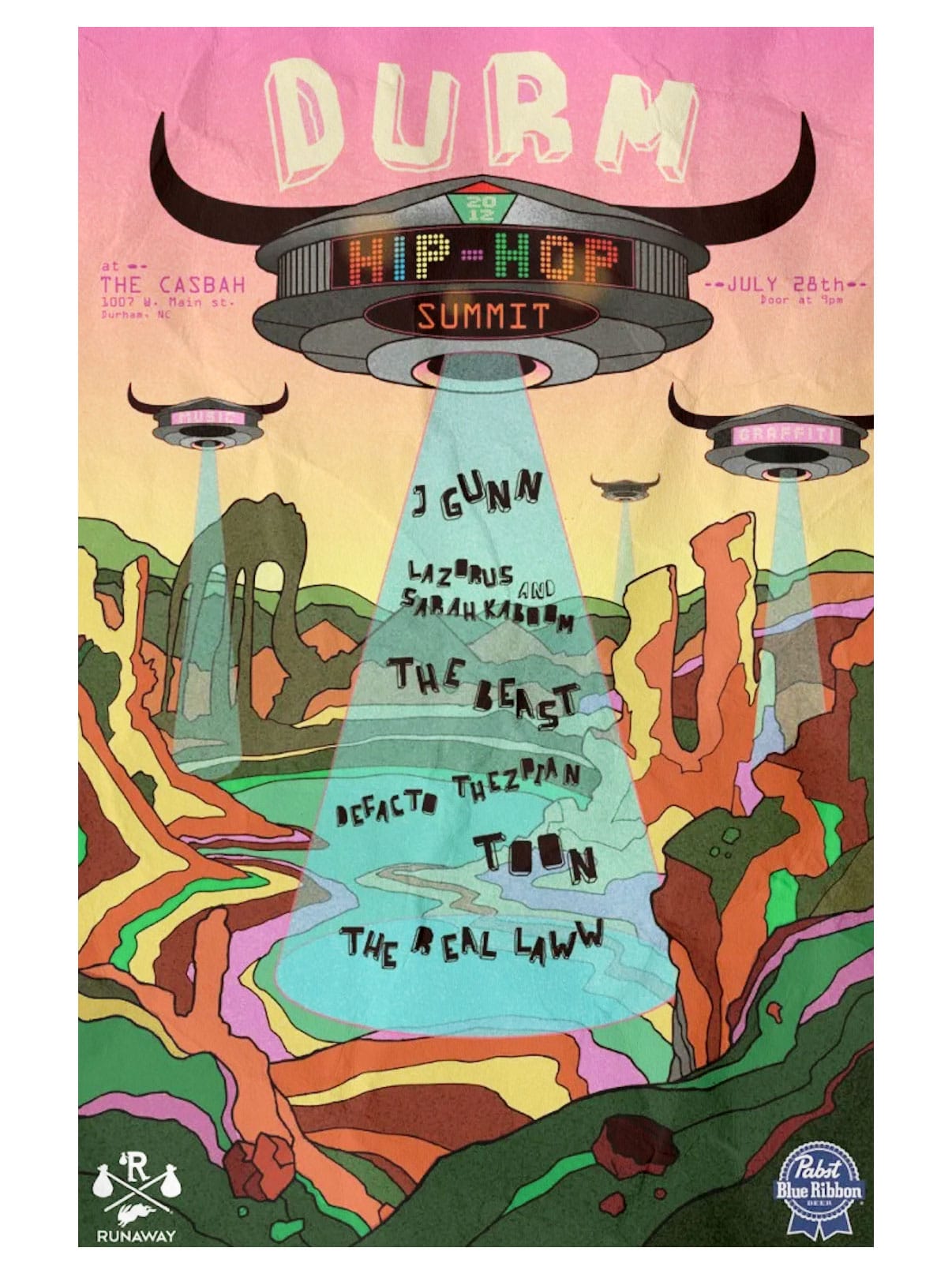Cliques, Cults, and Community
A Durham artist reflects on the triumphs and the challenges of an earlier, highly collaborative era in Triangle hip-hop — and the signs that a new one is on the way.

Lately, I’ve been thinking about “community.”
An overused term, yet still underutilized concept, in our culture today; a fickle, opaque thing. Sometimes a genuine bid for connection, others simply a ploy for the marketing hacks to vacuum up whatever spare coin you have in your Apple Pay account. Maybe it’s just become something for the woke crowd to talk about over brunch and mimosas? Couldn’t say.
That being said, I do have a few thoughts on the matter. And seeing that my experiences on the “community” mostly come from the music side of things, I’ll speak from that perspective.
Cast your mind back to an earlier Durham. A Durham where, if you ventured downtown, you might just keep your car doors locked and focus ahead to the destination in front of you. The Durham that gentrification hadn’t quite hit yet. 2012. The “music “scene as we know it was just beginning to spill over into the public eye. Before then, from my angle, all of us were just underground rappers and artists — creatives whom only the most art-centric cared for.
In this version of Durham, it wasn’t a rare sighting to often see two people paired up for musical gain and execution. Toon & The Real Laww. Blaze The Sky (SkyBlew and Azon Blaze). The Koolest (Danny Blaze and Dinero P). Wreck-N-Crew (Trie Cartier and Dope Sutton). All of it probably stemming from NC’s own hip-hop forebears Little Brother, and the early-2000s Justus League era that birthed them (and Petey Pablo before that). While over a decade later it may have been common sight to see these pairings out and about on a stage bringing the house down with electric performances, it’d be a far cry to say that we were really “community“-oriented in the truest sense.
Somehow, in the years following that early-2010s surge of NC talent and collaboration (or more specifically, Triangle talent), we figured that being in a clique was the move. Everyone wanted the success of a Pro Era, A$AP Mob, or even a Wu-Tang without realizing what all that entailed. Not recognizing that these weren’t random stumblings into success, but rather planned and fully involved manifestations; that it’s difficult to begin a movement when those involved all have different motives.
Don’t get me wrong. At the end of the day, all of us have our own life-specific reasons as to why we pursue or don’t pursue certain things. Make certain decisions. Execute certain actions. This does not, however, mean that two things can’t be true at once: yes, you want success for yourself, but you also want your mother to be happy. These two ideas don’t have to be mutually exclusive, but instead, can be two different boards used to build the same boat.

From the years 2013-2018 in the Triangle, it felt like every artistic entity had, or was beginning to make, their own clique. Posse if you will. Groups of persons who all rocked with that one noteworthy artist or music group. From afar, these groups of people looked exciting — mass movements all supporting one particular artist, repping wherever and whenever. A sign of solidarity. Which, it could be argued, is one of the sole concepts behind “community.”

